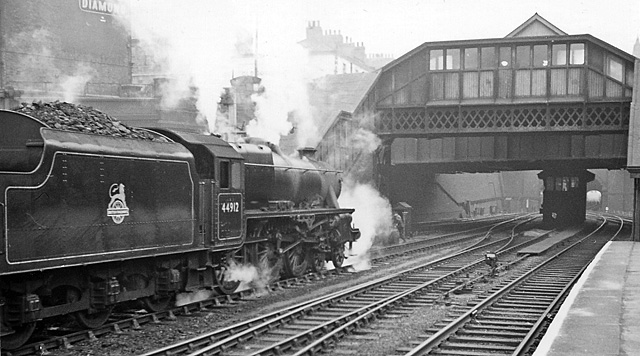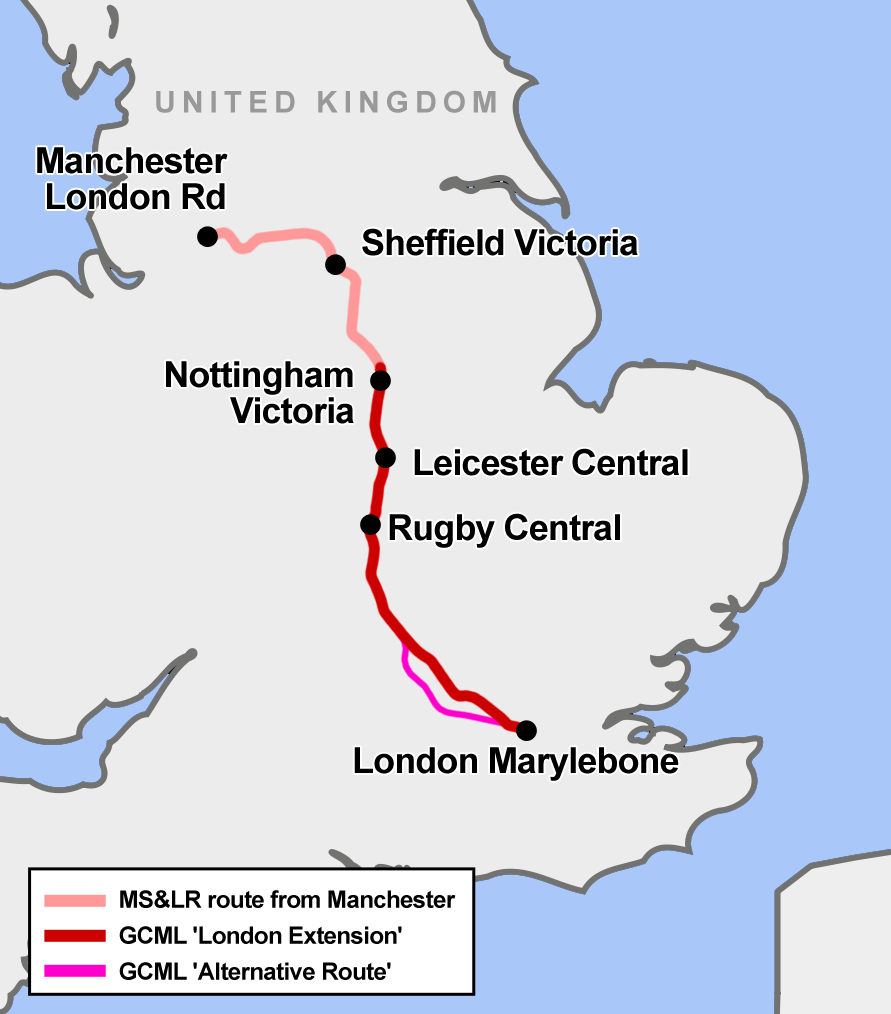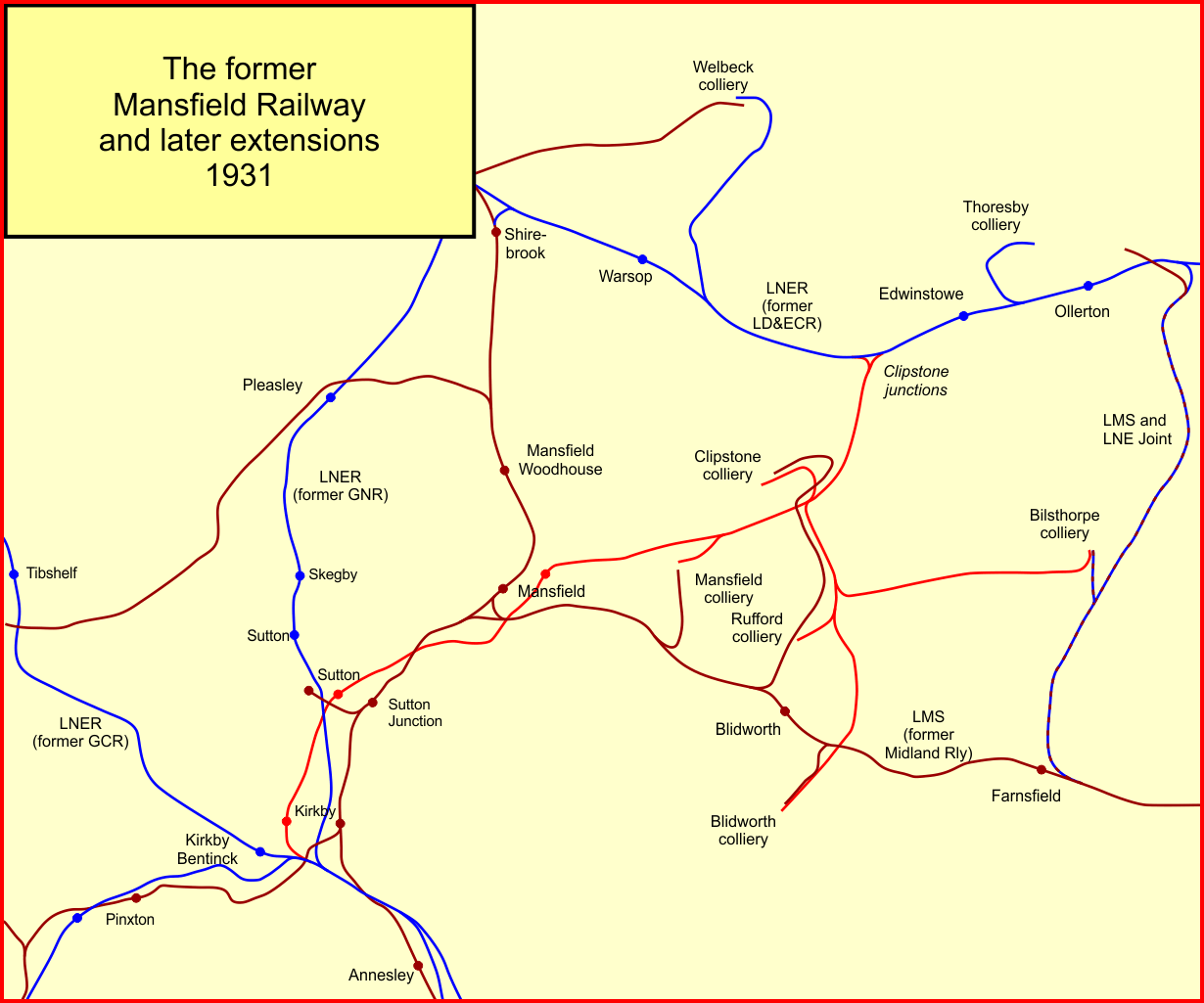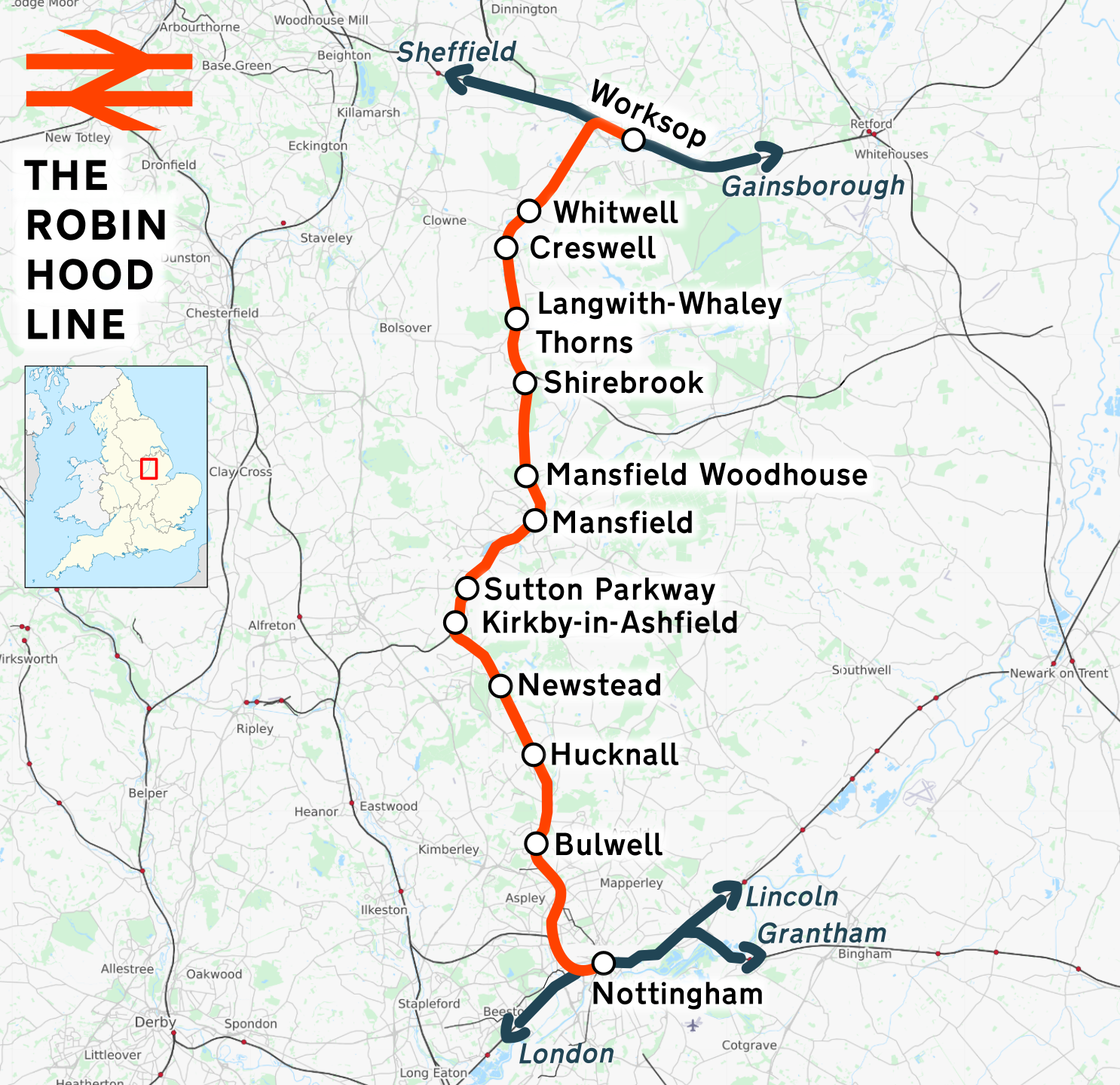|
Kirkby In Ashfield
Kirkby-in-Ashfield is a market town in the Ashfield District of Nottinghamshire, England. With a population of 25,265 (according to the 2001 National Census), it is a part of the wider Mansfield Urban Area. The Head Offices of Ashfield District Council are located on Urban Road in the town centre. Overview Kirkby-in-Ashfield lies on the eastern edge of the Erewash Valley which separates Nottinghamshire and Derbyshire. Kirkby, as it is locally known, was originally a Danish settlement (Kirk-by translates as 'Church Town' in Danish) and is a collection of small villages including Old Kirkby, The Folly (East Kirkby), Nuncargate and Kirkby Woodhouse. It is mentioned in the ''Domesday Book'' and has two main churches: St Wilfrid's, a Norman church, which was gutted by fire on 6 January 1907 but quickly re-built; and St Thomas', built in the early 1910s in neo-gothic style. History Kirkby Castle Kirkby Castle is said to have dated back to at least the 13th Century. Its owner i ... [...More Info...] [...Related Items...] OR: [Wikipedia] [Google] [Baidu] |
Ashfield, Nottinghamshire
Ashfield () is a local government district in Nottinghamshire, England. The population of Ashfield was 127,200 in 2018. The district is mostly urban and forms part of both the Nottingham and Mansfield Urban Areas. There are three towns in the district; Sutton-in-Ashfield, Kirkby-in-Ashfield and Hucknall. The district was formed on 1 April 1974, under the Local Government Act 1972, by the merger of urban districts of Hucknall, Kirkby-in-Ashfield, Sutton-in-Ashfield and parts of Basford Rural District, namely the parishes of Annesley, Felley and Selston. The largest settlement is Sutton-in-Ashfield. Towns and villages in the district include the following: * Annesley * Annesley Woodhouse * Hucknall * Huthwaite * Jacksdale * Kirkby-in-Ashfield * Selston * Skegby * Sutton-in-Ashfield * Stanton Hill * Teversal * Underwood Politics Elections to the district are held every 4 years, with currently 35 councillor A councillor is an elected representative for a lo ... [...More Info...] [...Related Items...] OR: [Wikipedia] [Google] [Baidu] |
Midland Railway
The Midland Railway (MR) was a railway company in the United Kingdom from 1844. The Midland was one of the largest railway companies in Britain in the early 20th century, and the largest employer in Derby, where it had its headquarters. It amalgamated with several other railways to create the London, Midland and Scottish Railway at grouping in 1922. The Midland had a large network of lines emanating from Derby, stretching to London St Pancras, Manchester, Carlisle, Birmingham, and the South West. It expanded as much through acquisitions as by building its own lines. It also operated ships from Heysham in Lancashire to Douglas and Belfast. A large amount of the Midland's infrastructure remains in use and visible, such as the Midland main line and the Settle–Carlisle line, and some of its railway hotels still bear the name '' Midland Hotel''. History Origins The Midland Railway originated from 1832 in Leicestershire / Nottinghamshire, with the purpose of serving the ne ... [...More Info...] [...Related Items...] OR: [Wikipedia] [Google] [Baidu] |
Nottingham Victoria Railway Station
Nottingham Victoria railway station was a Great Central Railway and Great Northern Railway railway station in Nottingham, England. It was designed by the architect Albert Edward Lambert, who also designed the rebuild of the Nottingham Midland station (now known simply as Nottingham station). It was opened by the Nottingham Joint Station Committee on 24 May 1900 and closed on 4 September 1967 by the London Midland Region of British Railways. The station building was entirely demolished (except the clock tower), and the Victoria Centre shopping centre was built on the site, incorporating the old station clock tower into the main entrance on Milton Street (the continuation of Mansfield Road). Background In 1893 the Manchester, Sheffield and Lincolnshire Railway obtained authorisation to extend its North Midlands railway network into London. This new line was opened on 15 March 1899 (by which time the railway company was known as the Great Central Railway) and became known as t ... [...More Info...] [...Related Items...] OR: [Wikipedia] [Google] [Baidu] |
Great Central Main Line
The Great Central Main Line (GCML), also known as the London Extension of the Manchester, Sheffield and Lincolnshire Railway (MS&LR), is a former railway line in the United Kingdom. The line was opened in 1899 and built by the Great Central Railway running from Sheffield in the North of England, southwards through Nottingham and Leicester to Marylebone in London. The GCML was the last main line railway to be built in Britain during the Victorian period. Built by the railway entrepreneur Edward Watkin with the aim to run as a fast trunk route from the North and the East Midlands to London and the south of England. Initially not a financial success, it recovered under the leadership of Sam Fay. Although initially planned for long-distance passenger services, in practice the line's most important function became to carry goods traffic, notably coal. In the 1960s, the line was considered by Dr Beeching as an unnecessary duplication of other lines that served the same places, espe ... [...More Info...] [...Related Items...] OR: [Wikipedia] [Google] [Baidu] |
Kirkby Bentinck Railway Station
Kirkby Bentinck railway station was a station serving the town of Kirkby-in-Ashfield, Nottinghamshire, England. It was on the Annesley branch of the Manchester, Sheffield and Lincolnshire Railway, later the Great Central Railway on the section from Nottingham Victoria to Sheffield Victoria. The station was opened in January 1893 and closed in March 1963 after 70 years in service. Until 1 August 1925 it was named Kirkby & Pinxton station, and it also appeared on some Ordnance Survey Ordnance Survey (OS) is the national mapping agency for Great Britain. The agency's name indicates its original military purpose (see ordnance and surveying), which was to map Scotland in the wake of the Jacobite rising of 1745. There was a ... maps as Kirkby & Bentinck station. Present day Nothing remains of Kirkby Bentinck station apart from two concrete poles that held the station sign and the station master's house on Church Hill. The site is now used for agriculture. References Ex ... [...More Info...] [...Related Items...] OR: [Wikipedia] [Google] [Baidu] |
Mansfield Railway
The Mansfield Railway was an eleven-mile railway line in Nottinghamshire, England. It was built to serve collieries opening in the coalfield around Mansfield, and ran between junctions at Clipstone and Kirkby-in-Ashfield on the Great Central Railway. It opened in 1916 and was worked by the GCR. Passenger stations were opened on the line, although, at the date of opening, road bus competition was already dominant. The passenger service was withdrawn in 1956 and the line closed in stages as collieries ceased work, completely ending operation in 2003. Prior railways Railways had existed in the immediate area of Mansfield for many years. The first proper railway had been the Mansfield and Pinxton Railway of 1819, built for the purpose of conveying coal from Pinxton Basin on the Cromford Canal. It was a horse-drawn edge railway.Vanags, John, ''The Mansfield and Pinxton Railway'', The Old Mansfield Society, Mansfield, 2001, , pages 17 and 23 The Midland Railway established a prese ... [...More Info...] [...Related Items...] OR: [Wikipedia] [Google] [Baidu] |
Kirkby-in-Ashfield Central Railway Station
Kirkby-in-Ashfield Central is a former railway station that served the town of Kirkby-in-Ashfield, Nottinghamshire. History The station was opened in 1917 by the Mansfield Railway along with Mansfield Central and Sutton-in-Ashfield Central. The line, including its stations, was worked by the Great Central Railway and became part of the LNER in 1923 and subsequently British Rail British Railways (BR), which from 1965 traded as British Rail, was a state-owned company that operated most of the overground rail transport in Great Britain from 1948 to 1997. It was formed from the nationalisation of the Big Four (British ra ...ways in 1948. The station was conventional and spacious. Most passenger services plied between Nottingham Victoria and Mansfield Central, with some extending to Edwinstowe and Ollerton. Goods and timetabled passenger services ceased on 3 January 1956, though Summer weekend excursion traffic to Scarborough, Cleethorpes, Skegness and Mablethorpe con ... [...More Info...] [...Related Items...] OR: [Wikipedia] [Google] [Baidu] |
Robin Hood Line
The Robin Hood Line is a railway line running from Nottingham to Worksop, Nottinghamshire, in the United Kingdom. The stations between Shirebrook and Whitwell (inclusive) are in Derbyshire. Passenger services are operated by East Midlands Railway. The line in its present form opened to passengers in stages between 1993 and 1998. Following the Beeching cuts of the 1960s, the line had been freight-only. The cuts had left Mansfield as one of the largest towns in Britain without a railway station. History The majority of the current Robin Hood Line re-uses the former Midland Railway (MR) route from Nottingham to Worksop. However, due to rationalisation leading to track removal in order to save the costs of maintaining the tunnel north of Annesley, the through route was severed in the 1970s. Northwards from Nottingham, the freight-only line remained intact as far as Newstead, where it had served the now closed Newstead Colliery. Southwards from Worksop, the line followed the ... [...More Info...] [...Related Items...] OR: [Wikipedia] [Google] [Baidu] |
Kirkby-in-Ashfield Railway Station
Kirkby-in-Ashfield railway station serves the town of Kirkby-in-Ashfield in Nottinghamshire, England. The station is on the Robin Hood Line and is operated by East Midlands Railway between Nottingham and Worksop. History Kirkby-in-Ashfield was served by three railway stations: * Kirkby-in-Ashfield Central station (closed 1962) was located 700m to the west of the present station on the former Great Central Railway Mansfield Central branch. * Kirkby-in-Ashfield East station (closed 1964) was 350m to the east of the present station on the former Midland Railway Nottingham to Worksop line. * Kirkby Bentinck station (closed 1963) was located in Bentinck Town to the south west of Kirkby-in-Ashfield, on the former Great Central Railway London to Manchester main line. The closures of these lines left the area with no passenger rail services until the reopening of the former Midland Railway route, now known as the 'Robin Hood Line', in the 1990s. However, by this time British Rail ... [...More Info...] [...Related Items...] OR: [Wikipedia] [Google] [Baidu] |
Kirkby-in-Ashfield East Railway Station
Kirkby-in-Ashfield East railway station was a station in Kirkby-in-Ashfield, Nottinghamshire. It was opened in 1848, and was located on the Midland Railway's Mansfield Branch Line (Now the Robin Hood Line). It was one of three stations that served the town. The others were both Kirkby-in-Ashfield Central and Kirkby Bentinck. The station was replaced by the modern-day station of the same name (minus the East name). History Opened by the Midland Railway, it became part of the London, Midland and Scottish Railway during the Grouping of 1923. The station then passed on to the London Midland Region of British Railways on nationalisation in 1948, the station survived use until 1965. Stationmasters *S. Osman 1873 - 1874 (resigned 30 June 1874) *John Mercer 1874 - 1890 (formerly station master at Worthington) *William Tunn 1890 - 1896 (formerly station master at Fiskerton) *Henry St. John Newell 1896 - 1901 (committed suicide 23 October 1901) *Albert William Niblett 1902 - 1910 * ... [...More Info...] [...Related Items...] OR: [Wikipedia] [Google] [Baidu] |
Clipstone Railway Station
Clipstone Colliery Sidings railway station was a station in Clipstone, Nottinghamshire. While primarily a goods station, there was an unadvertised halt used by workmen. It was on the former Lancashire, Derbyshire and East Coast Railway line and is listed in Butt as ''Clipstone Colliery Sidings.'' A large concentration of sidings around Kings Clipstone and the worker's halt at New Clipstone village both served the Clipstone, Mansfield, Thoresby, Ollerton, Welbeck and Rainworth collieries for several decades. Clipstone Sidings signalbox was existent on 21 October 1950 and was near Clipstone West Junction, heading towards Welbeck Junction. Clipstone East signalbox was existent in the 1960s on the 'main-line' between Welbeck Junction and Thoresby Junction. The Midland Loaded Sidings of Clipstone Colliery Clipstone Colliery was a coal mine in the village of Clipstone, Nottinghamshire, part of the area known as The Dukeries. The colliery opened in 1922 and operated until ... [...More Info...] [...Related Items...] OR: [Wikipedia] [Google] [Baidu] |
Langwith Junction
Langwith Junction is a suburb of Shirebrook, in Derbyshire, England. Its name derives from the former Shirebrook North railway station, which was on the now-defunct Lancashire, Derbyshire and East Coast Railway The Lancashire, Derbyshire and East Coast Railway (LD&ECR) was built to connect coalfields in Derbyshire and Nottinghamshire with Warrington and a new port on the Lincolnshire coast. It was a huge undertaking, and the company was unable to raise .... It forms one of the six Langwith villages. References * The Railway Clearing House Handbook of Railway Stations 1904, David & Charles reprint 1970 Villages in Derbyshire Bolsover District {{Derbyshire-geo-stub ... [...More Info...] [...Related Items...] OR: [Wikipedia] [Google] [Baidu] |






